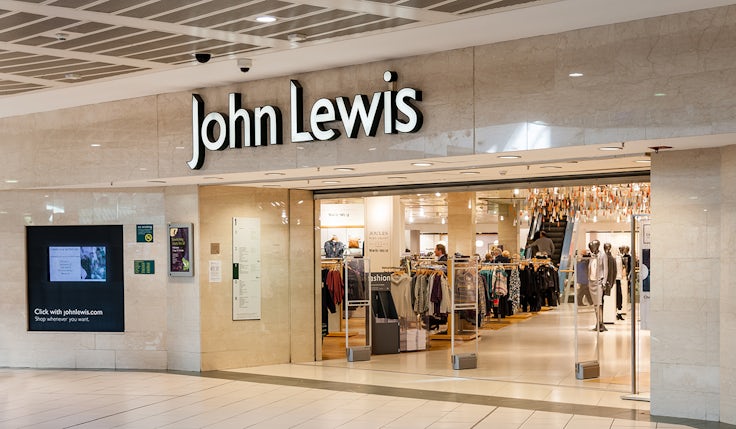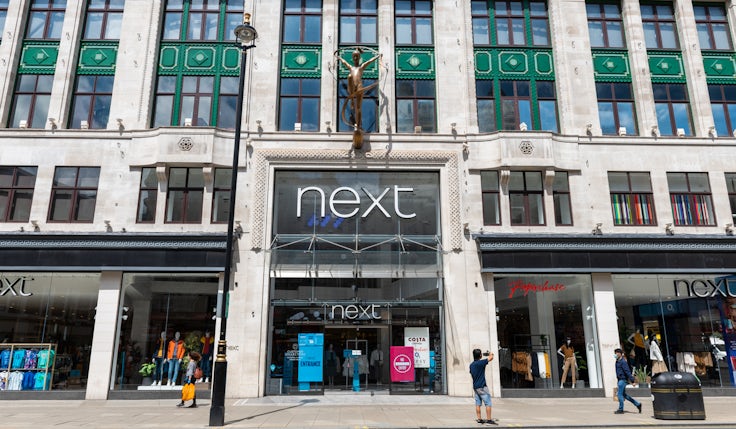Which retailers are winning the battle for third party brands?
While M&S and Next can see a profitable future in selling third party brands, has John Lewis got its strategy wrong?
 Working with brands is a fundamental part of being a retailer. Yet, these relationships seem to be creating a trip hazard for John Lewis, as some third party brands supplying its products have revealed they are unhappy with the deals the retailer is offering.
Working with brands is a fundamental part of being a retailer. Yet, these relationships seem to be creating a trip hazard for John Lewis, as some third party brands supplying its products have revealed they are unhappy with the deals the retailer is offering.
According to reports in The Times, the venerable retailer has upset fashion brands by upping already high costs for stocking their products. Renegotiated contracts see brands pay John Lewis up to 50% of every sale in fees and commissions.
An unnamed fashion CEO is “flabbergasted” at the charges, according to the report, which notes that fashion brand Seasalt has already cut ties with the retailer.
Seasalt explains that for “strategic reasons” it has decided to end its relationship with John Lewis and will now focus on its partnerships with Marks & Spencer and Next, as well as the “continued development” of its DTC channels.
John Lewis has responded to the news by saying it is reviewing how it deals with brands on a range of issues including “marketing and shop space, as well as fees”. The retailer adds that it is building “trusting and fair relationships” that benefit John Lewis and its suppliers, and over the past six months has introduced 90 new fashion brands.
But has John Lewis picked the wrong time to test the loyalty of suppliers? The likes of Next and M&S are increasing the level of third party brands they stock in-store and on their websites. While at the same time John Lewis is expanding its own brand offering with Anyday, a value focused range of 2,400 products designed to undercut its existing collections by up to 40%.
Next has really shown what a positive collaboration can produce. The John Lewis relationship [with brands] has always been a little adversarial.
Richard Hyman
Retail analyst Richard Hyman believes the John Lewis strategy is “foolhardy”. Worse still, it isn’t new. He says that even before the current review of supplier deals, a number of brands were dissatisfied with what the retailer was offering.
“There’s been a bit of disquiet from brands for some time about the deal they get from John Lewis. A number of third party brands have felt that the terms and the relationship did not compare favourably with some other retailers, especially Next,” says Hyman.
“Next has really shown what a positive collaboration can produce. The John Lewis relationship has always been a little adversarial.”
Next is introducing additional brands at pace. Its website features products from the likes of Adidas, Oliver Bonas and Boohoo-owned Dorothy Perkins, while last year it signed a joint venture agreement to sell lingerie brand Victoria’s Secret. According to The Times, Next also undercuts John Lewis, charging commission of 38% to sell on its website.
John Lewis eyes price conscious shoppers with value own brand launch
In its trading statement covering the period to 6 May, Next credits online sales with keeping it in good health during lockdown. While the figures alone might suggest that many of its in-store sales simply transferred online during the Covid-19 pandemic, the company says that was not the case.
Next explains that the growth in online sales of homeware, third party brands and childrenswear, along with increasing sales overseas, made up for sales lost in stores. Sales of third-party brands – including Lipsy, which is owned by Next – rose by 67%, or £64m, compared to pre-lockdown figures in 2019. Over the same period sales of Next-branded adult clothing fell by 46%, or £150m.
Meanwhile, premium fashion retailer Reiss – in which Next owns a 25% stake – has launched a curated selection from US denim brand Paige via its ecommerce platform. Under the name Paige Curated by Reiss, it represents the first time a third party brand has been stocked by the retailer.
Reiss is using ‘Total platform’, a service developed by Next for external brands which sees the retailer run their ecommerce, warehousing and logistics operations. This expertise – along with lower costs and larger audiences than John Lewis – makes Next an appealing retail partner for brands, says Hyman.
Third party future
Next is not the only competition for John Lewis. In March this year troubled high street stalwart M&S revealed plans to sell third party fashion brands for the first time.
The products were introduced online to ‘turbocharge’ digital sales, with the door to in-store sales being left open. Labels including Hobbs, Joules and White Stuff joined the roster, with lingerie label Freya being announced just this week.
The strategy has already started to bear fruit. Speaking in May, M&S CEO Steve Rowe confirmed that the retailer had introduced 21 guest brands and described results as being “very encouraging with further substantial growth planned”.
“In January we also acquired the Jaeger brand for £6m. Its historical reputation for innovation in natural fibres, British sourcing and distinctive style provides a complementary addition to the M&S range,” Rowe added.
M&S strategy to sell rival brands marks the end of an era
According to the M&S CEO, the growth of online platforms, coupled with the increasing cost of online customer acquisition for smaller retailers, gives M&S an opportunity to leverage its large customer base and its Sparks loyalty scheme data to partner with guest brands online.
“In addition, we will be introducing online-only ranges, recognising the different rate of sale across channels including trialling ‘test and repeat’ products,” said Rowe.
“Given that around one third of the M&S range is year-round product, we will also expand best seller and ‘never out of stock’ initiatives. Combined with a curated range of third-party brands we expect a substantial improvement in the online offer in the coming year.”
This growing competition makes the decision to drive up costs for brands at John Lewis a gamble for the department store group, according to Hyman. He predicts brands could become increasingly picky about which retailers they deal with, on the basis that it is better to sell more items through fewer channels than to spread the same sales more thinly over a greater number of platforms – thus incurring increased costs.
If players like Next offer better relationships, lower costs and larger audiences, might they gain more loyalty from brands in return?
“That is definitely what has happened and will happen. At the end of the day it is a ‘bums on seats’ game,” says Hyman. “Next has got a very strong business and they are able to generate very good traffic. And that’s what you want. The volumes of sales that Next generates through its website, they are much bigger than John Lewis and M&S. Miles bigger, and they are better at it.”







Comments